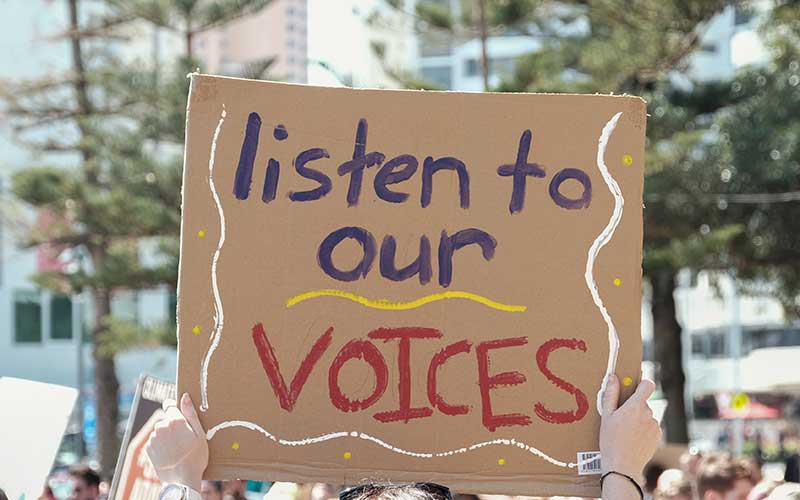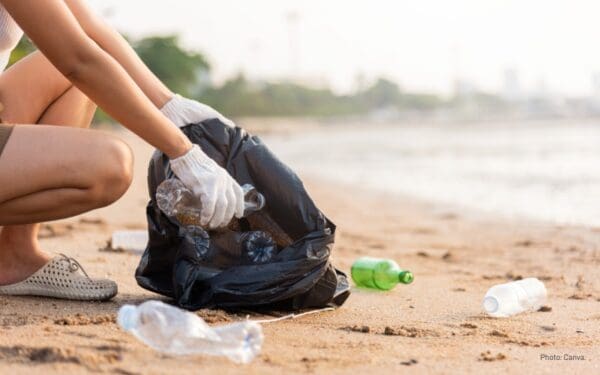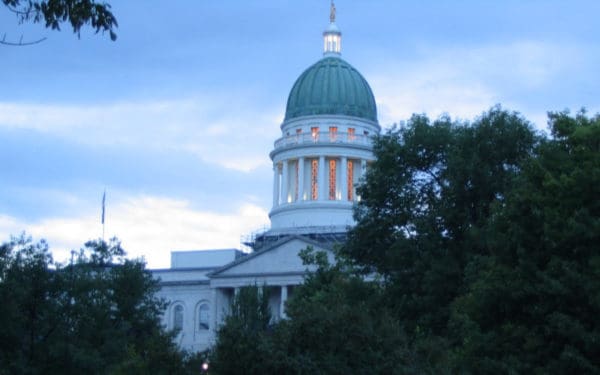
Environmental justice means showing up for communities every day, not just when disaster strikes. Photo: SewCream via Shutterstock
Living in the Movement
Environmental justice has become one of the hottest buzz words of the year. We at CLF talk about it in our work, you hear it in new policies being proposed, and it appears on social media. But as it becomes trendy, we risk forgetting its purpose. And if the past couple of months have taught us anything, communities across our nation need help that goes beyond a popular meme.
My name is Naomi Richmond. This summer, I interned with the Communications Team at Conservation Law Foundation. There are a lot of interesting and important disciplines in the world. Yet, communications always pulled me in for two reasons: I could help people and bring them together. And when I was looking for an internship this summer, CLF’s mission incorporated both of these points while focusing on improving the environment and the greater New England area.
I had no idea what the term “environmental justice” meant when I began this internship at the beginning of the summer. I did, however, have my past experiences and background. I am a young Afro-Latina woman who grew up in neighborhoods that did not always have the best resources. I was born in Boston, Massachusetts, but my family slowly moved down the East Coast. We lived in Pennsylvania, Virginia, Maryland, and Florida before I returned to Boston for college.
I grew up in communities that needed environmental justice the most. I also lived in neighborhoods that already had the resources and ability to make change. Still, I didn’t understand the difference or know what the environmental world called the movement until later in life. I could only connect the dots when I had more access to education and a framework for understanding the issue.
What is Environmental Justice?
From COVID-19 to racial injustice, our society is experiencing several defining events challenging us to grow. We are beginning to recognize what we stand for, not just individually, but also as a collective. For CLF, this growth caused us to re-evaluate how we support New England’s environmental justice movement. If we aim to center equity across all of our work, are our actions reflecting this goal? Thanks to my summer internship, I got to learn all about this mission. But first, I had to understand the core issue. What is environmental justice?
The Environmental Protection Agency defines environmental justice as “the fair treatment and meaningful involvement of all people regardless of race, color, national origin, or income, with respect to the development, implementation, and enforcement of environmental laws, regulations, and policies.”
This definition is an earful, so let’s break it down. Environmental justice, or EJ, needs to protect all people from environmental harm – no matter their race, ethnicity, or social class – and give them access to making decisions to create a healthier and safer environment where they live.
People who have less access to resources and education are disproportionately communities of color and live in high-poverty areas. I have learned that these communities are called EJ communities, and the fight to achieve equality and increase access has been prevalent for many years. Over the past couple of months, the EJ movement has gained more attention as the country has dealt with COVID-19 and the racist treatment of Black and brown people in multiple facets of life.
Acting as a Bridge to the Community
How does environmental justice play out here in New England? Deo Mwano, who served as CLF’s Environmental Justice Advocate for New Hampshire until this summer, helped me understand.
Unlike southern New England, northern New England states often lack organized environmental justice groups – even though communities there face many of the same issues as their southern neighbors. Deo worked on connecting with communities in New Hampshire – particularly Manchester and Nashua – to identify their EJ concerns and coordinate with CLF on how to address them.
When you think about an issue such as environmental justice that is so community-focused, it requires strong relationships. They are vital for an organization just beginning to work in cities with no framework for environmental justice. Deo spent the past few months as the “bridge between the two”: the organization and the community. He focused on building relationships, researching, and creating advisory and advocacy groups. But as the number of COVID-19 cases grew, Deo had to not only adjust to virtual work but also to the communities’ shifting priorities.
The Two Models of Environmental Justice
Deo broke down environmental justice into two models: reactive and proactive. Reactive environmental justice happens after an event. When you think about environmental work in general, do you automatically jump to crises such as Hurricane Katrina or the Deepwater Horizon oil spill? There is a misconception that EJ work requires some big event to react to, which then brings about change.
The proactive model is quite different. That approach combines ongoing actions to improve residents’ quality of life, which are often area-specific and lessen the negative impact when catastrophic events occur. “How do you solve environmental justice issues without a catastrophic event?” Deo asked. “Most people [residents and organizations] will engage on larger issues but not on the day-to-day.”
CLF is taking action on both sides of the spectrum. On the reactive side, CLF filed a Title VI complaint in Massachusetts to prevent state energy agencies from discriminating against low-income communities. It also is working to hold big oil companies such as Exxon and Shell accountable for water pollution and for failing to prepare their facilities for the climate crisis. More recently, CLF has sued Transdev Services for contributing to tailpipe pollution that can harm children’s health.
As I’ve come to understand, the day-to-day action is just as necessary. CLF is working to address these issues, as well, including building community relationships by continuing its work in New Hampshire, with Arnold Mikolo picking up on the work that Deo started there. The organization is also working to improve access to public transportation, with a current focus on the greater Boston area.
But to help the communities that need it the most, it’s essential to understand the local area. Research such as the Healthy Neighborhoods Study can help achieve this understanding. The study shows how where you live matters to your physical and mental health and how changes caused by development affect them both.
But it does not stop there, as CLF also works on solutions to improve neighborhood health. In partnership with the Massachusetts Housing Investment Corporation (MHIC), CLF created the Healthy Neighborhoods Equity Fund, which focuses on increasing access to affordable, energy-efficient housing with easy access to transportation.
So, What Comes Next?
In a world that’s changing so rapidly, it’s easy to forget that we are making progress – and that we have more to do. Not everything can be immediate, and environmental justice looks different for every place. It requires commitment, but it will get done. Lately, I’ve been encouraged by the surge in support and the diversity of people who are involved. Deo also reinforced this point of hope as he explained, “people have to have an agency to identify what kind of power they have to bring change.” In this time of influence, I look forward to seeing what we can accomplish together as we push on.
If you’re still looking for some additional background information, take some time to read about how the environment and racism are connected. I found this New York Times article by Somini Sengupta especially helpful and relevant during my research.
This blog was originally published on September 16, 2020.




